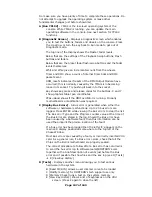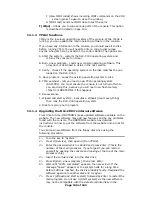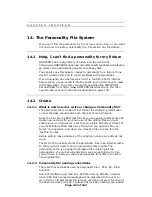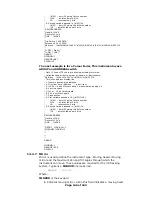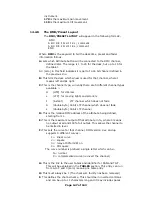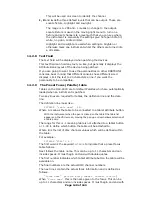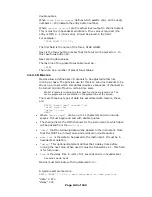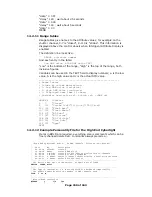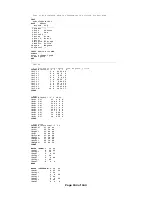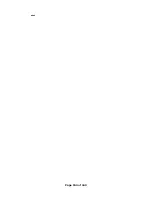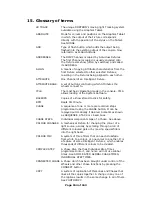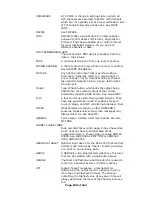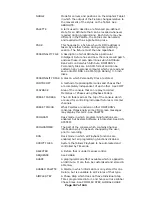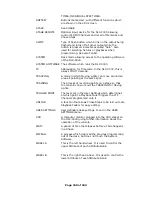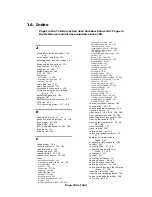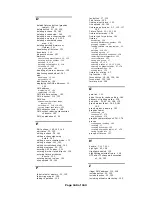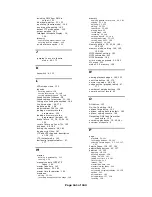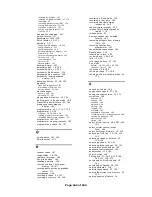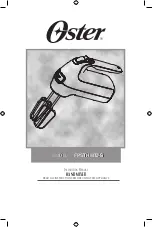
Page 147 of 163
instrument.
170 is the maximum pan movement.
110 is the maximum tilt movement.
14.2.8 The DMX/Preset Layout
The DMX/PRESET LAYOUT will appear in the following format:-
DMX
A B C D E F G H I J K L ; comment
A B C D E F G H I J K L; comment
END
Where DMX is the keyword to tell the desk dmx, preset and fader
information follows.
A: sets which Attribute button will be connected to the DMX channel,
defined later. The range is 1 to 20 for the desk, but up to 15 for
the tablet.
A 0 (zero) in this field indicates it is part of a 16 bit channel defined in
the previous line.
B: This tells the desk which wheel is used for that channel, where 1
means left and 61 right.
C: This is the channel type, currently there are 5 different channel types
available :-
H
(HTP) for dimmer
L
(LTP) for moving lights and scrollers
I
(instant)
LTP channel which does not fade
S
(double byte) 16 bit LTP channel which does not fade
s
(double byte) 16 bit LTP channel
D: This is the relative DMX address of the attribute being defined,
starting from 1.
E: This is the maximum output of that attribute in %, where 0 means
no output at all and 100% full output. This allows the channel to
be limited in level.
F: This sets the curve for that channel, DOM version 2.xx and up
supports 4 different curves :-
1 = linear curve
2 = square
3 = relay at 50%(128) on
4 = FD square
The curve number is prefixed a single letter which can be:-
N = normal
C = complemented curve (ie invert the channel)
G: This is the link to the user tables and identifier for PAN and TILT.
This will be explained in the TABLES section. This entry can run
from A to F and 0 (zero) meaning no table entry.
H: This must always be 1 (The checksum facility has been removed).
I: This defines the channel name. This should be in inverted commas
and can be up to 11 characters long and it may include spaces.





